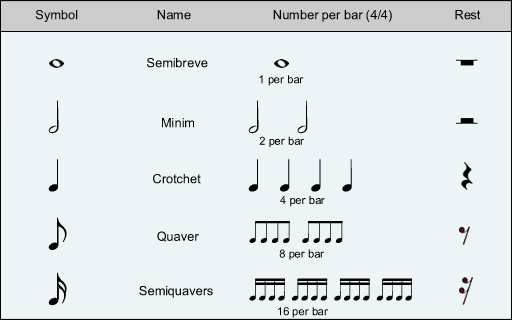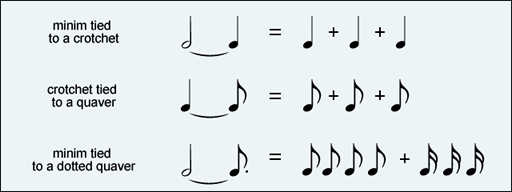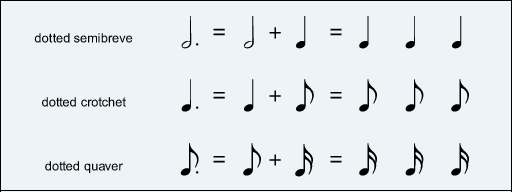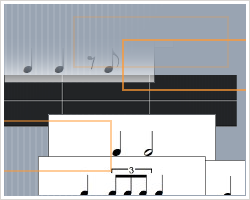In order to read, identify and transcribe rhythms, you need to become familiar with rhythm notation and rhythm patterns. This mainly involves indicating when a note happens and how long it lasts, and recognizing when you hear a common rhythm. Rhythm occurs within the framework of meter, which is simply a repetitive pattern of strong and weak beats. Here are some common examples of meter:
| Two-beat meter: | STRONG - weak |
| Three-beat meter: | STRONG - weak - weak |
| Four-beat meter: | STRONG - weak - weak - weak |
The meter of a song is indicated by its time signature. The time signature consists of two numbers, stacked one on top of the other. The top number represents the number of beats per bar, while the bottom number represents the note value for each beat. Rhythms are notated using notes and rests. Here are the basic notations for each note, along with its equivalent rest (a rest is silence, when no sound is played):

Notes can also be joined together with a tie to create a longer value:

A dot beside a symbol extends its duration by 1/2. For example, the length of a dotted crotchet is equivalent to three quavers.

Rhythms in music are made up of short phrases that combine to make longer phrases, much like a spoken language. Many of these phrases are made up of common two-beat patterns. Once you become familiar with these short patterns, it will be much easier to identify and follow the rhythms of longer phrases. Here is an application that will play short two-beat rhythm patterns for you:
Rhythm Puzzles will strengthen your recognition of rhythm notation, and will train your ear to match the rhythms you hear with their associated notation. It will also help you to become familiar with the common rhythm patterns that combine to make longer rhythms.

